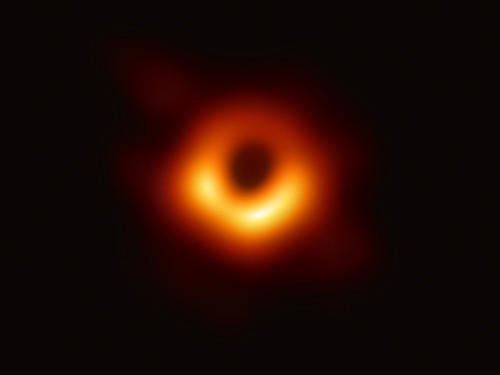🌄🍁🍂🌫🎃
🌄🍁🍂🌫🎃

More Posts from Monstrous-mind and Others
🐾🐈💀

🐈⬛🐈🎃🍂🍁


When witches go riding, and black cats are seen, the moon laughs and whispers, 'tis near Halloween 🎃🖤🐾
Astronomy From 45,000 Feet
What is the Stratospheric Observatory for Infrared Astronomy, or SOFIA, up to?

SOFIA, the Stratospheric Observatory for Infrared Astronomy, as our flying telescope is called, is a Boeing 747SP aircraft that carries a 2.5-meter telescope to altitudes as high as 45,000 feet. Researchers use SOFIA to study the solar system and beyond using infrared light. This type of light does not reach the ground, but does reach the altitudes where SOFIA flies.

Recently, we used SOFIA to study water on Venus, hoping to learn more about how that planet lost its oceans. Our researchers used a powerful instrument on SOFIA, called a spectrograph, to detect water in its normal form and “heavy water,” which has an extra neutron. The heavy water takes longer to evaporate and builds up over time. By measuring how much heavy water is on Venus’ surface now, our team will be able to estimate how much water Venus had when the planet formed.

We are also using SOFIA to create a detailed map of the Whirlpool Galaxy by making multiple observations of the galaxy. This map will help us understand how stars form from clouds in that galaxy. In particular, it will help us to know if the spiral arms in the galaxy trigger clouds to collapse into stars, or if the arms just show up where stars have already formed.

We can also use SOFIA to study methane on Mars. The Curiosity rover has detected methane on the surface of Mars. But the total amount of methane on Mars is unknown and evidence so far indicates that its levels change significantly over time and location. We are using SOFIA to search for evidence of this gas by mapping the Red Planet with an instrument specially tuned to sniff out methane.

The plumes, illustrated in the artist’s concept above, were previously seen in images as extensions from the edge of the moon. Next our team will use SOFIA to study Jupiter’s icy moon Europa, searching for evidence of possible water plumes detected by the Hubble Space Telescope. The plumes were previously seen in images as extensions from the edge of the moon. Using SOFIA, we will search for water and determine if the plumes are eruptions of water from the surface. If the plumes are coming from the surface, they may be erupting through cracks in the ice that covers Europa’s oceans. Members of our SOFIA team recently discussed studying Europa on the NASA in Silicon Valley Podcast.

This is the view of Jupiter and its moons taken with SOFIA’s visible light guide camera that is used to position the telescope.

By cabinsinthewoods



Der Baum im Herbstlicht & Das Leuchten des Waldes by Oliver Henze
🍁🍂




🍂🍁🍃🎃

🎃Cozy Autumn Blog👻

Astronomers Capture First Image of a Black Hole!
Scientists have obtained the first image of a black hole, using Event Horizon Telescope observations of the center of the galaxy M87. The image shows a bright ring formed as light bends in the intense gravity around a black hole that is 6.5 billion times more massive than the Sun. This long-sought image provides the strongest evidence to date for the existence of supermassive black holes and opens a new window onto the study of black holes, their event horizons, and gravity. Credit: Event Horizon Telescope Collaboration (read more).

-
 forever-lost-in-yesterday reblogged this · 1 year ago
forever-lost-in-yesterday reblogged this · 1 year ago -
 theplaidcub liked this · 1 year ago
theplaidcub liked this · 1 year ago -
 moonlight-pisces liked this · 1 year ago
moonlight-pisces liked this · 1 year ago -
 nati7 liked this · 1 year ago
nati7 liked this · 1 year ago -
 69sherry reblogged this · 1 year ago
69sherry reblogged this · 1 year ago -
 69sherry liked this · 1 year ago
69sherry liked this · 1 year ago -
 iwritestuffallday liked this · 1 year ago
iwritestuffallday liked this · 1 year ago -
 bargas liked this · 1 year ago
bargas liked this · 1 year ago -
 kawaiisoulsong reblogged this · 1 year ago
kawaiisoulsong reblogged this · 1 year ago -
 kawaiisoulsong liked this · 1 year ago
kawaiisoulsong liked this · 1 year ago -
 kygentleman70 liked this · 1 year ago
kygentleman70 liked this · 1 year ago -
 rkeithlindsey1 reblogged this · 1 year ago
rkeithlindsey1 reblogged this · 1 year ago -
 rkeithlindsey1 liked this · 1 year ago
rkeithlindsey1 liked this · 1 year ago -
 m-moda-m liked this · 1 year ago
m-moda-m liked this · 1 year ago -
 wayneinteressierts liked this · 1 year ago
wayneinteressierts liked this · 1 year ago -
 totarzn liked this · 1 year ago
totarzn liked this · 1 year ago -
 lowcountrytohighprairie liked this · 2 years ago
lowcountrytohighprairie liked this · 2 years ago -
 wheeloftheyearseasons reblogged this · 3 years ago
wheeloftheyearseasons reblogged this · 3 years ago -
 aussielight reblogged this · 3 years ago
aussielight reblogged this · 3 years ago -
 pandashappyplace reblogged this · 3 years ago
pandashappyplace reblogged this · 3 years ago -
 bkelly65 liked this · 3 years ago
bkelly65 liked this · 3 years ago -
 halloweenandhorrorfan reblogged this · 3 years ago
halloweenandhorrorfan reblogged this · 3 years ago -
 halloweenandhorrorfan liked this · 3 years ago
halloweenandhorrorfan liked this · 3 years ago -
 autumn-moods reblogged this · 3 years ago
autumn-moods reblogged this · 3 years ago -
 chthonicavalon liked this · 4 years ago
chthonicavalon liked this · 4 years ago -
 rivette-the-red liked this · 4 years ago
rivette-the-red liked this · 4 years ago -
 delahada liked this · 4 years ago
delahada liked this · 4 years ago -
 weareautumncourt reblogged this · 4 years ago
weareautumncourt reblogged this · 4 years ago -
 nerdyfuturismcookingpatrol liked this · 4 years ago
nerdyfuturismcookingpatrol liked this · 4 years ago -
 anaslytherin liked this · 4 years ago
anaslytherin liked this · 4 years ago -
 vallenofthepumpkins23 liked this · 4 years ago
vallenofthepumpkins23 liked this · 4 years ago -
 meganemanuele liked this · 4 years ago
meganemanuele liked this · 4 years ago -
 raypakorn reblogged this · 4 years ago
raypakorn reblogged this · 4 years ago -
 alesbianrambles liked this · 4 years ago
alesbianrambles liked this · 4 years ago -
 ladysibyl liked this · 4 years ago
ladysibyl liked this · 4 years ago -
 gingerlockzzz reblogged this · 4 years ago
gingerlockzzz reblogged this · 4 years ago -
 peneigh-dzredfohl liked this · 4 years ago
peneigh-dzredfohl liked this · 4 years ago
My ambition is handicapped by laziness. -C. Bukowski Me gustan las personas desesperadas con mentes rotas y destinos rotos. Están llenos de sorpresas y explosiones. -C. Bukowski. I love cats. Born in the early 80's, raised in the 90's. I like Nature, Autumn, books, landscapes, cold days, cloudy Windy days, space, Science, Paleontology, Biology, Astronomy, History, Social Sciences, Drawing, spending the night watching at the stars, Rick & Morty. I'm a lazy ass.
222 posts